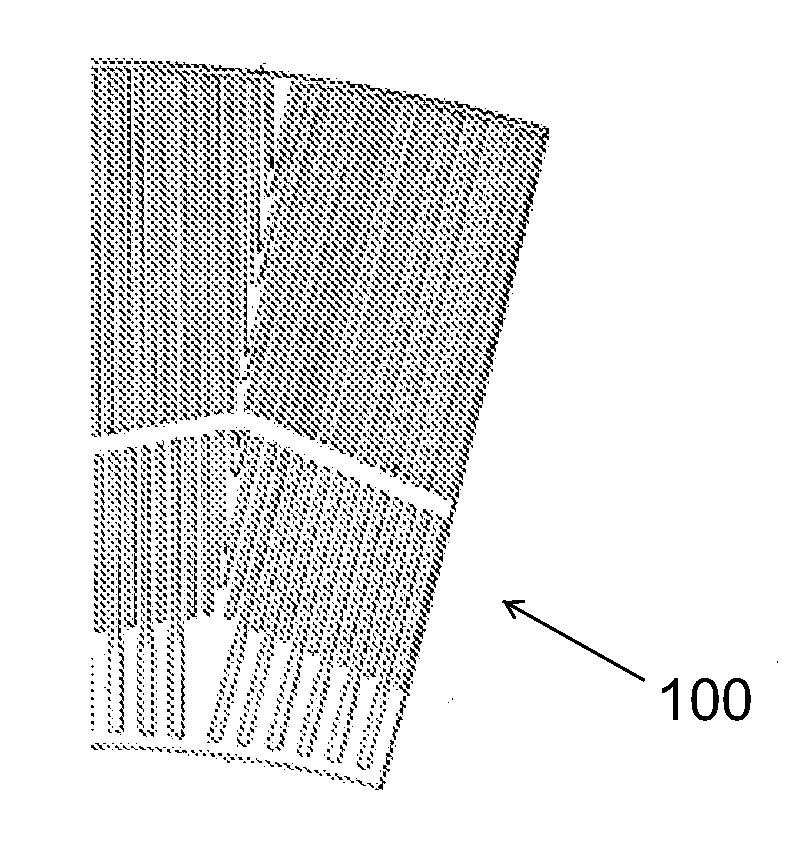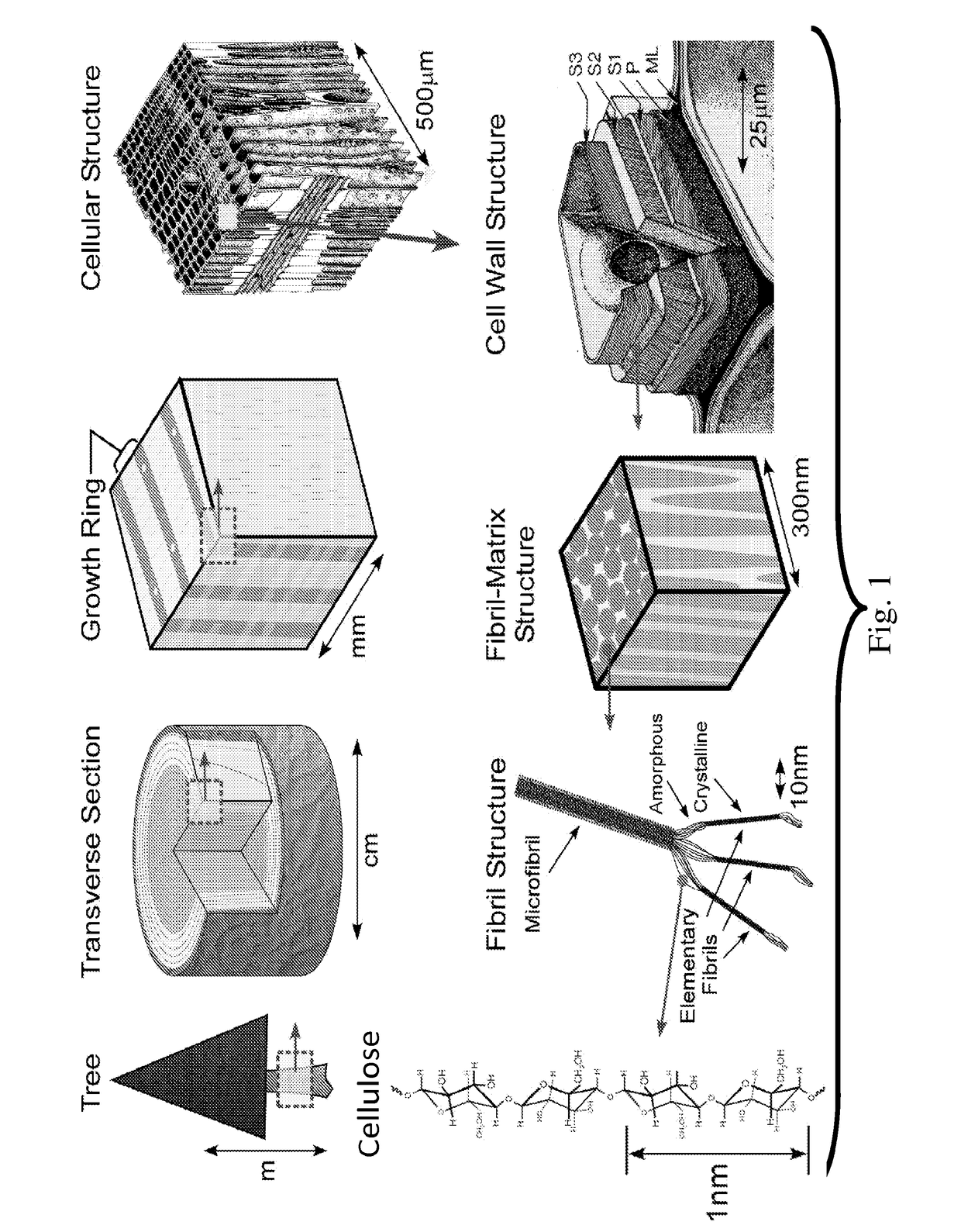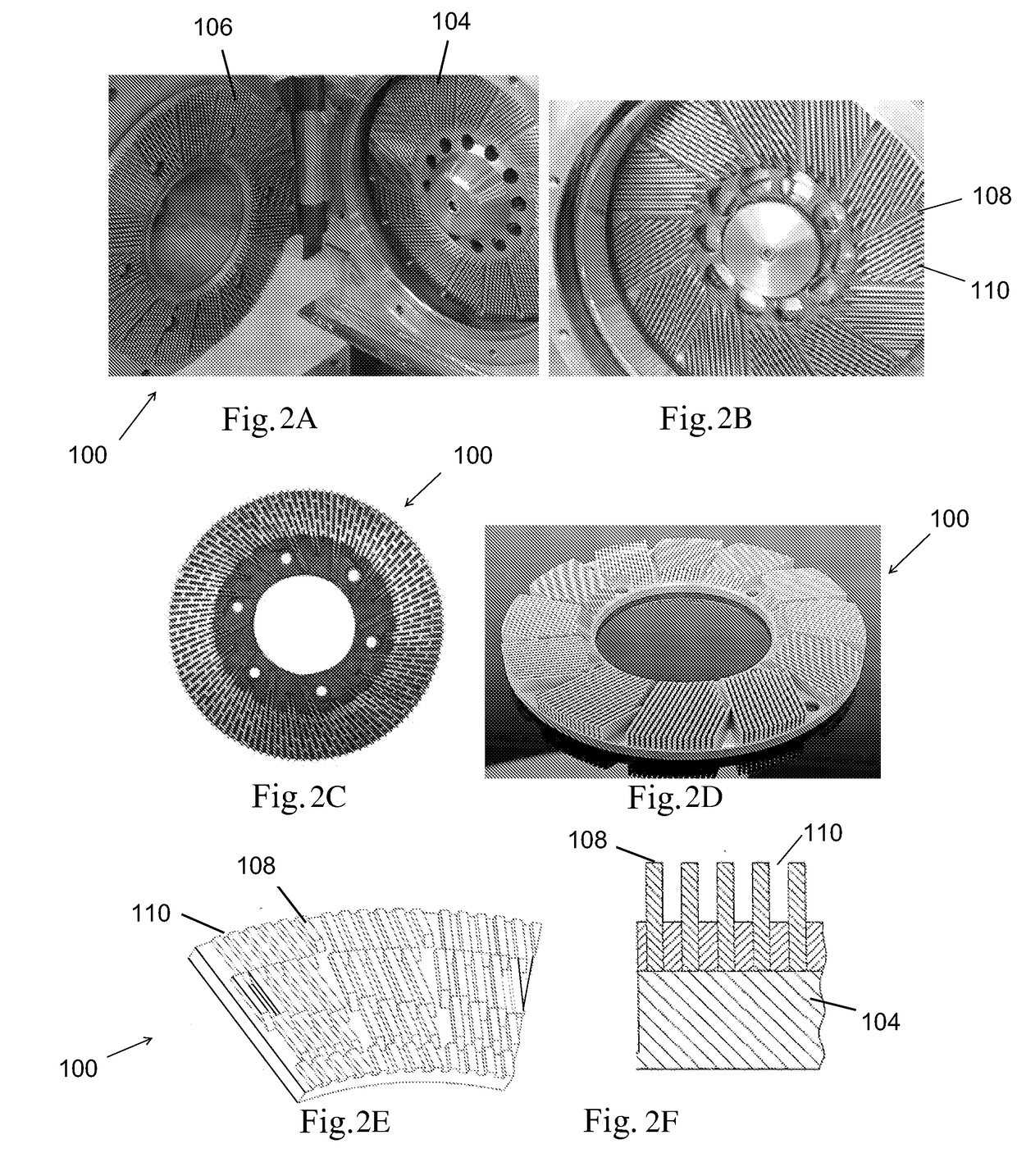High efficiency production of nanofibrillated cellulose
- Summary
- Abstract
- Description
- Claims
- Application Information
AI Technical Summary
Benefits of technology
Problems solved by technology
Method used
Image
Examples
example 1
[0071]Hand sheets are prepared with varying amounts (about 2.5% to about 30%, dry wt basis) of CNF added, the CNF having been refined in several batches to various stages of refining from about 50% fines to about 95% fines. Initial freeness, headbox freeness and freeness reductions are shown in FIGS. 6A and 6B for various handsheet (HS) compositions of cellulose pulps having 340 ml CSF initial fiber freeness of the hardwood (HW) pulp. In FIG. 6A, the amount of CNF added to the HS is on the x axis, and the property, in this case CSF, is on the Y axis. The various curves represent a CNF fines level (95%, 85%, 77%, 64% and 50%), at the different levels of CNF in the HS (ranging from about 2% to 20% CNF). There are two reference curves on the SW CNF graphs—one is unrefined SW added to the HW base (27% fines-671 CSF), and the second is refined SW (31% fines and 222 CSF) added to the HW base. FIG. 6A illustrates that a freeness reduction correlates to both: (1) increasing the level of fin...
example 2
[0073]Handsheets are prepared as in Example 1. The handsheets were tested for tensile strength in accordance with Tappi standard T 494 om-01 (2001). In FIG. 7A, the initial 340 ml CSF kraft base HW pulp is mixed with softwood fibers only. The comparative / control samples were refined to a high freeness level (671 ml CSF) and a low freeness level (222 ml CSF). Five test CNF samples were refined ranging from 50% fines to 95% fines and added to the base at percentages from about 2.5% to about 25%. Very high freeness pulps do not bond well and do not develop tensile strength readily. FIG. 7B is similar to FIG. 7A, except that the initial 340 ml CSF base HW pulp is mixed with CNF from both HW and SW sources in concentrations varying from about 2.5% to about 30% of the paper composition, and at incremental fines levels from about 95% to about 64% as shown on the graph. The tensile strength of the handsheet increases with increasing CNF concentration and the % fines level of the CNF.
example 3
[0074]Handsheets are prepared as in Example 1. Gurley Porosity (or Gurley density) is a measure of the paper's permeability to air and refers to the time (in seconds) required for a given volume of air (100 cc) to pass through a unit area (1 in.2=6.4 cm.2) of a sheet of paper under standard pressure conditions. (See Tappi T 460). The higher the number, the lower the porosity. While coatings and sizing can impact porosity, it is desirable for an unsized and uncoated base paper used for release grades to have a Gurley Porosity value of at least about 300, or at least about 400, or at least about 500, or at least about 600, or at least about 800, or at least about 1000 seconds.
[0075]Gurley Porosity of the base pulp HS is about 25 as shown in FIG. 8, and the values increase (lower porosity) for CNF-containing samples with varying % fines (94%, 85%, 77%, 64% and 50%) at varying concentrations (about 2% to about 25%) as shown in the chart. Two reference standards are shown as before.
PUM
| Property | Measurement | Unit |
|---|---|---|
| Length | aaaaa | aaaaa |
| Length | aaaaa | aaaaa |
| Fraction | aaaaa | aaaaa |
Abstract
Description
Claims
Application Information
 Login to View More
Login to View More - R&D
- Intellectual Property
- Life Sciences
- Materials
- Tech Scout
- Unparalleled Data Quality
- Higher Quality Content
- 60% Fewer Hallucinations
Browse by: Latest US Patents, China's latest patents, Technical Efficacy Thesaurus, Application Domain, Technology Topic, Popular Technical Reports.
© 2025 PatSnap. All rights reserved.Legal|Privacy policy|Modern Slavery Act Transparency Statement|Sitemap|About US| Contact US: help@patsnap.com



